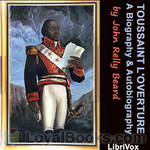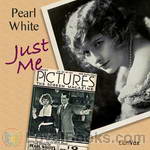|
Books Should Be Free Loyal Books Free Public Domain Audiobooks & eBook Downloads |
|
|
Books Should Be Free Loyal Books Free Public Domain Audiobooks & eBook Downloads |
|
Books of Memoirs |
|---|
|
Book type:
Sort by:
View by:
|
By: Benjamin Harris (1781-1858) | |
|---|---|
 The Recollections of Rifleman Harris
The Recollections of Rifleman Harris
The recollections of a British infantryman who served in the British army during the Napoleonic Wars. | |
By: Various | |
|---|---|
 National Geographic Magazine Vol. 01 No. 1.
National Geographic Magazine Vol. 01 No. 1.
National Geographic Magazine Volume 1 Number 1 published in 1889. Topics of articles are:Announcement by the National Geographic SocietyIntroductory Address by the PresidentGeographic Methods in Geologic InvestigationClassification of Geographic Forms by GenesisThe Great Storm of March 11 to 14, 1888The Great Storm off the Atlantic Coast of the United States, March 11th to 14th, 1888The Survey of the CoastThe Survey and Map of Massachusetts | |
By: Nathaniel Hawthorne (1804-1864) | |
|---|---|
 Our Old Home
Our Old Home
These essays, based on Hawthorne’s stay in England from 1853 to 1857 as American Consul in Liverpool, were first published in the form of a series of travel articles for The Atlantic Monthly.In these writings, he displays his humor, his empathetic nature, his pride in his country, and sometimes his sharp judgment of others. He shares with us the difficulties of being a consul in the 1850’s, takes us on a tour with him through rural England and Scotland, shows us the splendors of London, and the horrors of the poverty that so many suffered. (Introduction by Margaret) | |
By: Hiram Chase | |
|---|---|
 Two Years and Four Months in a Lunatic Asylum
Two Years and Four Months in a Lunatic Asylum
Hiram Chase is a well liked Reverend in a small ministry in Utica. When his mental and physical health deteriorates, he is taken to Utica lunatic asylum. After his stay in the asylum, Hiram documents his experiences and those of other patients in the asylum. He describes his daily routine and the negative experiences he had, along with praising certain individuals whom he met during his "Two Years and Four Months in a Lunatic Asylum". | |
By: Geoffrey H. Malins (1887-1943) | |
|---|---|
 How I Filmed the War
How I Filmed the War
An account of World War I and the experience of filming it by an early cinematographer (and, after the war, successful director) who was there. | |
By: Lord Thomas Cochrane (1775-1860) | |
|---|---|
 Autobiography of a Seaman, Vol. 1
Autobiography of a Seaman, Vol. 1
This two volume work is the autobiography of Lord Cochrane, a naval captain of the Napoleonic period. His adventures are seminal to the development of naval fiction as a genre. Marryat sailed with Cochrane, while later writers borrowed incidents from this biography for their fictions. Most notable among these is Patrick O'Brian, three of whose novels have clear parallels to incidents in the life of Cochrane. This first volume covers Cochrane's earlier life, during which he is most active militarily. (Introduction by Timothy Ferguson) | |
By: William Wells Brown (1814-1884) | |
|---|---|
 My Southern Home or, The South and Its People
My Southern Home or, The South and Its People
William Wells Brown was born a slave, near Lexington, Kentucky. His mother, Elizabeth, was a slave; his father was a white man who never acknowledged his paternity. Brown escaped slavery at about the age of 20. For many years he worked as a steam boatman and as a conductor for the Underground Railroad in Buffalo, New York. In 1843, he became a lecturer for the Western New York Anti-Slavery Society, and was a contemporary of Frederick Douglass.Brown went to Europe in 1849 to encourage British support for the anti-slavery movement in the United States... | |
By: Elizabeth Cady Stanton (1815-1902) | |
|---|---|
 Eighty Years and More; Reminiscences 1815-1897
Eighty Years and More; Reminiscences 1815-1897
Elizabeth Cady Stanton was one of the premier movers in the original women’s rights movement, along with Susan B. Anthony, her best friend for over 50 years. While Elizabeth initially stayed home with her husband and many babies and wrote the speeches, Susan went on the road to bring the message of the women’s rights movement to an often hostile public. When black men were given the vote in 1870, Susan and Elizabeth led the women’s rights establishment of the time to withhold support for a bill that would extend to black men the rights still denied for women of all colors... | |
By: William Cooper Howells | |
|---|---|
 Recollections of Life in Ohio, from 1813 to 1840
Recollections of Life in Ohio, from 1813 to 1840
Recollections of Life in Ohio is the autobiography of William Cooper Howells (1807-1894), father of the American novelist William Dean Howells. The Howells were Welsh woolen mill owners. William Cooper's father brought the family to America in 1808--at a time when Great Britain actually forbid skilled workmen from emigrating, thus putting the father's practical knowledge of mill machinery in great demand. Small scale industries--paper and woolen mills, flour mills, and distilleries were sprouting apace with farms in the newly opened lands of Ohio, where the Howells settled in 1813... | |
By: Henry Morgenthau (1856-1946) | |
|---|---|
 Ambassador Morgenthau's Story
Ambassador Morgenthau's Story
Ambassador Morgenthau’s memoirs of his years in the service of the United States in Constantinople, (today Istanbul), are an important primary historical resource for the study of the dissolution of the Ottoman Empire and the Armenian Genocide. During this genocide, approximately 1,500,000 Armenians living in Anatolia were murdered in an attempt to rid Turkey of its non-Turkish populations. Mr. Morgenthau left Turkey a frustrated man, having done all that he was able through diplomatic circles to halt the murders, to no avail... | |
By: Theodore Roosevelt (1858-1919) | |
|---|---|
 Strenuous Life: Essays and Addresses of Theodore Roosevelt, The
Strenuous Life: Essays and Addresses of Theodore Roosevelt, The
This book is a collection of Theodore Roosevelt’s published commentaries and public addresses on the general theme of the requirements for individual and collective success in the personal, civic, political, and social arenas. (Introduction by Bob Neufeld) | |
By: John Stuart Mill (1806-1873) | |
|---|---|
 Autobiography of John Stuart Mill
Autobiography of John Stuart Mill
John Stuart Mill (20 May 1806 – 8 May 1873), British philosopher, political economist, civil servant and Member of Parliament, was an influential liberal thinker of the 19th century. He was an exponent of utilitarianism, an ethical theory developed by Jeremy Bentham, although his conception of it was very different from Bentham's. He was a forceful proponent in the fight for government intervention in social reform. | |
By: Edna Brush Perkins (1880-1930) | |
|---|---|
 The White Heart of Mojave
The White Heart of Mojave
"The White Heart of the Mojave" recounts a 1920's adventure "in the wind and sun and big spaces" of Death Valley by two independent minded women, Edna Brush Perkins and Charlotte Hannahs Jordan. Both women were early feminists, Edna as chairwoman of the greater Cleveland Woman's Suffrage Party (1916-18). At the end of the Great War, the two friends wanted nothing more than to escape "to the solitariness of some wild and lonely place far from city halls, smokestacks, national organizations, and streets of little houses all alike... | |
By: John Relly Beard (1800-1876) | |
|---|---|
 Toussaint L’Ouverture: A Biography and Autobiography
Toussaint L’Ouverture: A Biography and Autobiography
François-Dominique Toussaint L’Ouverture (1743-1803) rose to fame in 1791 during the Haitian struggle for independence. In this revolt, he led thousands of slaves on the island of Hispañola to fight against the colonial European powers of France, Spain and England. The former slaves ultimately established the independent state of Haiti and expelled the Europeans. L’Ouverture eventually became the governor and Commander-In-Chief of Haiti before recognizing and submitting to French rule in 1801... | |
By: Dreiser, Theodore (1871-1945) | |
|---|---|
 Hollywood: Its Morals and Manners
Hollywood: Its Morals and Manners
Serialized in Shadowland from November 1921 to February 1922, Hollywood: Its Morals and Manners is Theodore Dreiser's shocking four part expose on the motion picture industry. In it, he shares his observations from his extended stay in Los Angeles, and gives us an intimate look at the seedier underside of Hollywood. | |
By: Anonymous | |
|---|---|
 Young Girl's Diary
Young Girl's Diary
The diary of an upper middle class Austrian girl, this book describes her life between the ages of eleven and fourteen. It's a coming of age story full of angst, boys, and questions. | |
By: Various | |
|---|---|
 National Geographic Magazine Vol. 01 No. 2
National Geographic Magazine Vol. 01 No. 2
National Geographic Magazine Volume 1 Number 2 published in 1889. Topics of articles are:Africa, its Past and Future Reports on:Geography of the LandGeography of the SeaGeography of the AirGeography of Life | |
By: William Alexander MacKay (1842-1905) | |
|---|---|
 Zorra Boys at Home and Abroad, or, How to Succeed
Zorra Boys at Home and Abroad, or, How to Succeed
By Zorra, in the following sketches, is meant a little district in Oxford county, Ontario, some ten miles square, composed of part of East and part of West Zorra, and containing a population of about fourteen hundred. It was settled about the year 1830, chiefly by Highlanders from Sutherlandshire, Scotland.Within the last forty years there have gone from this district over one hundred young men who have made their mark in the world. With most of these it has been the writer's good fortune to be personally and intimately acquainted; and companionship with some of them has been to him a pleasure and a benefit... | |
By: Agnes Repplier (1855-1950) | |
|---|---|
 In Our Convent Days
In Our Convent Days
With her usual wit and charm, Ms. Repplier recalls her days at Eden Hall, the Convent of the Sacred Heart in Torresdale, north of Philadelphia. She shares the highlights (and some of the low lights) of her time there. Perhaps this sharp eye, nurtured by her willfulness and independent spirit, was the reason she was not invited to return to Eden after her second year. Not only Catholics or boarding school alumnae will find this book entertaining; anyone who went to school or who looks back on their childhood will see their own experience somewhere in this memoir. | |
By: Reuben Gold Thwaites (1853-1913) | |
|---|---|
 Historic Waterways
Historic Waterways
Historic Waterways, Six Hundred Miles of Canoeing down the Rock, Fox and Wisconsin Rivers.This volume is the record of six hundred miles of canoeing experiences on historic waterways in Wisconsin and Illinois during the summer of 1887. There has been no attempt at exaggeration, to color its homely incidents, or to picture charms where none exist. It is intended to be a simple, truthful narrative of what was seen and done upon a series of novel outings through the heart of the Northwest. If it may induce others to undertake similar excursions, and thus increase the little navy of healthy and self-satisfied canoeists, the object of the publication will have been attained. | |
By: John D. Rockefeller (1839-1937) | |
|---|---|
 Random Reminiscences of Men and Events
Random Reminiscences of Men and Events
A good book by the oil revolutionist of the 20th century. As they say "Men should listen to experience" and this book is all about the experience of the second highest taxpayer of the US during the 20's. Though it is not in the book, this is a small poem he wrote:I was early taught to work as well as play,My life has been one long, happy holiday;Full of work and full of play-I dropped the worry on the way- And God was good to me everyday. | |
By: Mary Roberts Rinehart (1876-1958) | |
|---|---|
 Through Glacier Park
Through Glacier Park
This is about a three-hundred mile trip across the Rocky Mountains on horseback with Howard Eaton. It is about fishing, and cool nights around a camp-fire, and long days on the trail. It is about a party of all sorts, from everywhere, of men and women, old and young, experienced folk and novices, who had yielded to a desire to belong to the sportsmen of the road. And it is by way of being advice also. Your true convert must always preach. (Introduction by Mary Roberts Rinehart quoted from the text.) | |
By: Ki no Tsurayuki (872-945) | |
|---|---|
 The Tosa Diary
The Tosa Diary
Ki no Tsurayuki was a Japanese waka poet of the Heian period. In 905, he was one of the poets ordered to compile the "Kokinshu - Collected Japanese Poems of Ancient and Modern Times". He is also one of the Thirty-six Poetry Immortals of Japan. The Tosa Diary, written in 935, is considered the major work of Tsurayuki. It is an account of his return to the capital Kyoto from Tosa province, where he had served as governor since 930. The journey is by boat, and Tsurayuki tells about his sea sickness and fear of pirates, his impressions of the coast, and the various offerings to placate the gods of the sea... | |
By: Pearl White (1889-1938) | |
|---|---|
 Just Me
Just Me
Perhaps the first memoir written by a film celebrity, Pearl White's Just Me gives a first-person account of the actress' rise to stardom. White guides us through her early childhood, her development as a performer, and finally to her breakout role in The Perils of Pauline--a role that made her the most popular "serial queen" of early cinema. Although romanticized and somewhat embellished, this book gives us a fascinating glimpse into the film industry's earliest years and the various myths of film stardom. | |
By: Francis Archibald Bruton (1860-1929) | |
|---|---|
 Three Accounts of Peterloo
Three Accounts of Peterloo
A companion volume to F.A. Bruton's 'The Story of Peterloo', the full title of this short collection is 'Three Accounts of Peterloo by Eyewitnesses, Bishop Stanley, Lord Hylton, John Benjamin Smith with Bishop Stanley's Evidence at the Trial'. The three contemporary accounts, each with a short introduction by the editor, give different perspectives on the events of 16 August 1819, when a troop of Hussars accompanied by the local Yeomanry rode into a peaceful reform rally at St. Peter's Fields, Manchester, leaving 18 dead and more than 700 injured. | |
By: Phoebe Yates Pember (1823-1913) | |
|---|---|
 Reminiscences of a Southern Hospital, by Its Matron
Reminiscences of a Southern Hospital, by Its Matron
Phoebe Yates Pember served as a matron in the Confederate Chimborazo military hospital in Richmond, Virginia, during the Civil War, overseeing a dietary kitchen serving meals to 300 or more wounded soldiers daily. Reminiscences of a Southern Hospital is her vivid recounting of hospital life and of her tribulations (and personal growth) as a female administrator. To follow her from day one, when she is greeted with “ill-repressed disgust” that “one of them had come,” and she, herself, “could... | |
By: Hiram Bingham (1875-1956) | |
|---|---|
 Explorer in the Air Service
Explorer in the Air Service
Explorer Hiram Bingham discovered Machu Picchu in 1911, as recounted in his book Inca Lands, now released on Librivox at http://librivox.org/inca-lands-by-hiram-bingham/. In 1917, he became an aviator and organized the United States Schools of Military Aeronautics at eight universities to provide ground school training for aviation cadets, and then in Issoudun, France, Bingham commanded the primary Air Service flying school. He became a supporter of the Air Service in their post-war quest for independence from the Army and supported that effort, in part, with the publication of this book of his wartime experiences published in 1920 by Yale University Press. | |
By: Charles Ball (1780-?) | |
|---|---|
 Fifty Years in Chains; or The Life of an American Slave
Fifty Years in Chains; or The Life of an American Slave
This is the story of Charles Ball, an American slave who was born in 1780 and remained a slave for fifty years thereafter. Ball told his story to a lawyer who turned it into this written work. | |
By: Ivan Goncharov (1812-1891) | |
|---|---|
 Oblomov
Oblomov
Oblomov is the best known novel by Russian writer Ivan Goncharov, first published in 1859. Oblomov is also the central character of the novel, often seen as the ultimate incarnation of the superfluous man, a symbolic character in 19th-century Russian literature. Oblomov is a young, generous nobleman who seems incapable of making important decisions or undertaking any significant actions. Spoiled as a child to the point of not even being able to put on his own socks, Oblomov is unprepared to deal with the smallest difficulty of adult life... | |
By: Jane Barlow (1857-1917) | |
|---|---|
 Irish Idylls
Irish Idylls
Irish Idylls is a collection of short stories about Irish peasantry during the 19th Century. Ms Jane Barlow, an Irish lass, having, unbelievably, an uncertain date of birth, has a turn of phrase that delights and simultaneously enmeshes the reader/listener with compassion for her tableau. She captures the tune and lilt of dialogue so delightfully. A tiny sample: "So, by hook or by crook, Lisconnel holds together from year to year, with no particular prospect of changes; though it would be safe enough to prophesy that should any occur, they will tend towards the falling in of derelict roofs, and the growth of weeds round deserted hearthstones and crumbling walls... | |
By: Joseph Benjamin Polley (1840-1918) | |
|---|---|
 Soldier's Letters to Charming Nellie
Soldier's Letters to Charming Nellie
Whether written in camp, in hospital, or in hospitable home, the letters tell a plain, unvarnished, and true story of the observations and experiences, the impressions and feelings, of a soldier whose only personal regret is that he could not be one of those whose paroles at Appomattox are patents incontestable that they fought for the right as they saw it, as long as there was a hope to encourage them. Though not intended as history, they are historical in the respect that they narrate actual occurrences in camp, on the march, and in the battle... | |
By: Solomon Northup (1808 - c. 1864-18) | |
|---|---|
 Twelve Years a Slave
Twelve Years a Slave
Twelve Years a Slave is the memoir of a freeborn African American from New York who is kidnapped and sold into slavery. After being held for twelve years on a Louisiana plantation, he is eventually freed and reunited with his family. | |
By: George William Foote (1850-1915) | |
|---|---|
 Prisoner for Blasphemy
Prisoner for Blasphemy
George William Foote, a British secularist, was convicted and imprisoned on the charge of blasphemy after founding "The Freethinker", a magazine that, despite the best efforts of the 19th Century British judicial system, is still going strong. "Prisoner for Blasphemy" is a memoir of his several trials and final imprisonment in Holloway Gaol. Although Foote's was the last prominent blasphemy case in England, his hope that the blasphemy law would soon be abolished was not to be realised until almost a century after his death, in 2008. | |
By: William Bligh (1754-1817) | |
|---|---|
 Mutiny of the Bounty and Other Narratives
Mutiny of the Bounty and Other Narratives
In Bligh's own words, we hear about the lead-up to the famous mutiny and what happened afterwards with the mutineers and the castaways. This work contains two additional narratives by Bligh: Life of a Sailor Boy and The Sunken Treasure. | |
By: Pat O'Brien (1890-1920) | |
|---|---|
 Outwitting The Hun; My Escape From A German Prison Camp
Outwitting The Hun; My Escape From A German Prison Camp
A true war narrative, published in 1918 while WWI was still going on. | |
By: Elizabeth Bacon Custer (1842-1933) | |
|---|---|
 Boots and Saddles
Boots and Saddles
Elizabeth Custer has penned an engaging portrait of 1870’s life on a U.S. cavalry post in the Dakotas, just before her husband and his troops met their tragic deaths in the Battle of the Little Big Horn. “Our life,” she writes, “was often as separate from the rest of the world as if we had been living on an island in the ocean.” Her portrait of her husband, General George Armstrong Custer is laudatory—his intellect, his love of dogs (he kept a hunting pack of 40 at the post); but, Boots and Saddles is more than just a memorial... | |
By: Charles Anderson Dana (1819-1897) | |
|---|---|
 Recollections of the Civil War
Recollections of the Civil War
Recollections of the Civil War records the events that took place during the American Civil war. It forms one of the most remarkable volumes of historical, political, and personal reminiscences which have been given to the public. Mr. Dana wrote these Recollections of the civil war according to a purpose which he had entertained for several years. They were completed only a few months before his death on October 17, 1897. Go to the e-book on this book's catalog page for some great illustrations and an index. | |
By: George Borrow (1803-1881) | |
|---|---|
 Wild Wales
Wild Wales
Wild Wales: Its People, Language and Scenery is a travel book by the English Victorian gentleman writer George Borrow (1803–1881), first published in 1862 and now a classic travel text on Wales and the Welsh. The book recounts Borrow's experiences, insights and personal encounters whilst touring Wales alone on foot after a family holiday in Llangollen in 1854. Although contemporary critics dismissed its whimsical tone, it quickly became popular with readers as a travel book and more importantly as a very lively account of the literary, social and geographical history of Wales... | |
By: Thomas Dallam (c 1570-) | |
|---|---|
 Dallam's Travels with an Organ to the Grand Signieur, 1599-1600
Dallam's Travels with an Organ to the Grand Signieur, 1599-1600
Queen Elizabeth the First of England, the Grand Turk at Constantinople, and an organ builder named Thomas Dallam—quite a trio. In 1599, Elizabeth commanded master organ builder Dallam to construct and deliver to the Grand Signieur , as a present intended to garner trade and political advantages for England, a fantastic mechanical organ. Dallam’s wonder stood 16 feet high and was topped by a silver holly bush filled with blackbirds and thrushes that sung and shook their wings. Dallam kept a diary during his visit to Turkey, which included a sneak look through a grate at the Grand Turk’s concubines in the harem... | |
By: Edward Carpenter (1844-1929) | |
|---|---|
 My Days and Dreams
My Days and Dreams
Hard to imagine now, but there have been times and places where just wearing sandals could get you labeled as being in rebellion against established society. Two such places were Berkeley, California in the early 1960s and Millthorpe, England in the 1880s. Millthorpe was home to Edward Carpenter (1844-1929), an English socialist poet, philosopher, and activist who abandoned his upper crust life and university sinecure to grow market vegetables and handcraft sandals for a living. Carpenter’s search for the well-lived life, his passions and concerns resonate uncannily with the mood of long ago Berkeley... | |
By: Donald Shaw | |
|---|---|
 Eighteen Months' Imprisonment
Eighteen Months' Imprisonment
This is an absorbing memoir of an inmate's experiences and impressions while in a London prison. He describes himself as "a man of education and worldly experience" and weighing "19 stone 13 lbs" (279 lbs), a stone being 14 lbs, at the beginning of his imprisonment but not upon his release. The author writes with a reporter's keen perception and a talented novelist's ability to engage and at times amuse the reader. | |
By: George Savile Marquis of Halifax (1633-1695) | |
|---|---|
 Complete Works of George Savile, first Marquess of Halifax, with an Introduction by Walter Alexander Raleigh
Complete Works of George Savile, first Marquess of Halifax, with an Introduction by Walter Alexander Raleigh
George Savile, 1st Marquess of Halifax (11 November 1633 – 5 April 1695) was an English statesman, writer, and politician who sat in the House of Commons in 1660, and in the House of Lords after he was raised to the peerage in 1668. He's noted in history for his views on Charles II among others. This compilation covers a wide range of his views which are particularly telling, coming, as they do, from a man who was singularly positioned among the powers of the time, to make them. Prepare yourself for a journey into antiquated English speech. | |
By: Sarah Emma Edmonds (1841-1898) | |
|---|---|
 Nurse and Spy in the Union Army
Nurse and Spy in the Union Army
The “Nurse and Spy” is simply a record of events which have transpired in the experience and under the observation of one who has been on the field and participated in numerous battles—among which are the first and second Bull Run, Williamsburg, Fair Oaks, the Seven days in front of Richmond, Antietam, and Fredericksburg—serving in the capacity of “Spy” and as “Field Nurse” for over two years.While in the “Secret Service” as a “Spy,” which is one of the most hazardous positions in the army—she penetrated the enemy’s lines, in various disguises, no less than eleven times; always with complete success and without detection... | |
By: James Berry (1852-1913) | |
|---|---|
 My Experiences as an Executioner
My Experiences as an Executioner
From 1884 until 1891, James Berry was an executioner. In this time he carried out 131 hangings. In this memoir he writes about the methods he used, and the final moments of some of those he executed. | |
By: Samuel Pepys (1633-1703) | |
|---|---|
 Diary of Samuel Pepys 1661
Diary of Samuel Pepys 1661
Samuel Pepys was the first Secretary to the Admiralty during the reign of Charles II, instrumental in developing the Royal Navy and witness to some of the most significant events of the Restoration period, including the Great Fire of London. His famous diary, which covers a period of some ten years, throws a frank and intimate light on a fascinating period, through the lens of a vigorous, intelligent and refreshingly candid and extrovert personality. This volume covers the second year of the diary. | |
By: W. Somerset Maugham (1874-1965) | |
|---|---|
 Bishop's Apron
Bishop's Apron
"Canon Spratte saw himself as he thought others might see him: mediocre, pompous, self-assertive, verbose." Maugham could have added ambitious, hypocritical, and vain. In this engrossing social satire, Theodore Spratte, a cleric, motivated by an obsessive desire to be elevated to bishop, embellishes his family history and intrudes upon his son's and daughter's courtships. A reviewer in 1906 wrote, "The whole book is an admirable blend of cynical gaiety and broadly farcical comedy; it is the smartest and most genuinely humorous novel that the season has yet given us." -- Lee Smalley | |
By: Elizabeth Gertrude Stern (1889-1954) | |
|---|---|
 My Mother and I
My Mother and I
Elizabeth Stern was two and a half years old, when her family emigrated from Poland to Pittsburgh. My Mother and I is the story of Stern's Americanization and how it ultimately alienated her from her parents. Stern's father had been a small village rabbi. Strict and traditional in his views, he sends Elizabeth to learn Hebrew at age four, so she can fulfill her destiny "as the wife of a rabbi or scholar," but he opposes letting her attend high school. Stern's mother tries fitfully to pry open doors for her daughter... | |
By: Leo Tolstoy (1828-1910) | |
|---|---|
 My Confession
My Confession
"My Confession" is a brief autobiographical story of Leo Tolstoy's struggle with a mid-life existential crisis of melancholia. It describes his search for answers to the profound questions "What will come of my life?" and "What is the meaning of life?", without answers to which life, for him, had become "impossible." Tolstoy reflects on the arc of his philosophical life until then: his childhood abandonment of his Russian orthodox faith; his mastery of strength, will, power, and reason; and how, after he had achieved tremendous financial success and social status, life to him seemed meaningless... | |
By: James Weldon Johnson (1871-1938) | |
|---|---|
 Autobiography of an Ex-Colored Man
Autobiography of an Ex-Colored Man
Johnson's only novel, The Autobiography of an Ex-Colored Man, was originally published anonymously in 1912. It is a fictional novel written as a memoir of an unnamed biracial narrator who grew up in the South during the Reconstruction and post-Reconstruction eras. It is a story in which the narrator relates how as a young boy he initially assumed that he was white, and how his notions of racial identity were suddenly turned upside down one day—how from that moment on he was inclined to view himself and the world about him from the perspective of blackness. The novel received very little notoriety until Johnson republished it in 1927, this time taking full credit as its author. | |
By: Andrew Lang (1844-1912) | |
|---|---|
 Tales of King Arthur and the Round Table (version 2)
Tales of King Arthur and the Round Table (version 2)
The tales of King Arthur and his Knights are of Celtic origin. The Celts were the people who occupied Britain at the time when the history of the country opens, and a few words are necessary to explain why the characters in the stories act and speak as though they belonged to a later age. These stories are adapted from the Book of Romance by ANDREW LANG. It is believed that King Arthur lived in the sixth century, just after the Romans withdrew from Britain, and when the Britons, left to defend themselves against the attacks of the marauding Saxons, rose and defeated them at Mount Badon, securing to themselves peace for many years... | |
By: Irving Bacheller (1859-1950) | |
|---|---|
 Silas Strong
Silas Strong
Per the author: "The book has one high ambition. It has tried to tell the sad story of the wilderness itself—to show, from the woodsman's view-point, the play of great forces which have been tearing down his home and turning it into the flesh and bone of cities." But this story is much more than that. It revolves around Silas Strong and his distaste for the modernization and destruction of his beloved forest surroundings, and how it pleases him to teach younger folk how to appreciate that which has been given us... | |
By: Samuel Pepys (1633-1703) | |
|---|---|
 Diary of Samuel Pepys 1662
Diary of Samuel Pepys 1662
Samuel Pepys was the first Secretary to the Admiralty during the reign of Charles II, instrumental in developing the Royal Navy and witness to some of the most significant events of the Restoration period, including the Great Fire of London. His famous diary, which covers a period of some ten years, throws a frank and intimate light on a fascinating period, through the lens of a vigorous, intelligent and refreshingly candid and extrovert personality. This volume covers the third year of the diary. | |
By: Various | |
|---|---|
 Tim Bobbin: A View of the Lancashire Dialect
Tim Bobbin: A View of the Lancashire Dialect
A comic dialogue written in John Collier's idiosyncratic version of the 18th century South Lancashire dialect together with a collection of 19th century texts on Collier and his work. Egged on by Meary (Mary), Tummus (Thomas) recounts the series of misadventures that ensue when he makes a trip to Rochdale on an errand for his master. First published in 1746, the text grew over subsequent editions as Collier expanded the story, added a preface in which he berates publishers who had pirated his work, and inflated and amended his glossary... | |
By: Fanny Kelly (1845-1904) | |
|---|---|
 Narrative of My Captivity Among the Sioux Indians
Narrative of My Captivity Among the Sioux Indians
"Narrative of my captivity among the Sioux Indians: with a brief account of General Sully's Indian expedition in 1864, bearing upon events occurring in my captivity" "I was a member of a small company of emigrants, who were attacked by an overwhelming force of hostile Sioux, which resulted in the death of a large proportion of the party, in my own capture, and a horrible captivity of five months' duration. Of my thrilling adventures and experience during this season of terror and privation, I propose... | |
By: Charlie Chaplin (1889-1977) | |
|---|---|
 My Trip Abroad
My Trip Abroad
"A steak and kidney pie, influenza and a cablegram. There is the triple alliance that is responsible for the whole thing." So begins Charlie Chaplin's My Trip Abroad, a travel memoir charting the actor-director's semi-spontaneous visit to Europe. Fresh off the success of 1921's The Kid, Chaplin decides to "play hookey" after his seven year stay in Hollywood. He return to his native Europe as an international superstar, beloved by fans and hounded by reporters. The "triple alliance" of the book's opening line sends Chaplin on an whirlwind tour through Great Britain, Germany, and France -- and the results are both funny and insightful... | |
By: Hazard Stevens (1842-1918) | |
|---|---|
 First Successful Ascent of Mt. Rainier, 1870
First Successful Ascent of Mt. Rainier, 1870
Hazard Stevens and P.B. Van Trump, aided by the Indian guide Sluiskin, made the first documented successful ascent of Mt. Rainier on August 17, 1870. Hazard's account of the climb was first published in the Atlantic Monthly in 1876 and later reprinted with an introduction by Edmond S. Meany in 1916. Sluiskin tried to dissuade the climbers. "Takhoma” (the Indian name for Mt. Rainier) "was an enchanted mountain, inhabited by an evil spirit, who dwelt in a fiery lake on its summit. No human being could ascend it or even attempt its ascent and survive... | |
By: William Atherton | |
|---|---|
 Narrative of the Suffering and Defeat of the North-Western Army, Under General Winchester
Narrative of the Suffering and Defeat of the North-Western Army, Under General Winchester
This memoir dating from 1812ff, but only published in 1840s is a strikingly profound contrast with our modern materialism and comfort. It is personal and at the same time very formal and reserved. As a foot soldier traipsing about the wild countryside of the Midwest, hardly after the Louisiana Purchase, against British/Canadian/Native mercenaries, the story is one of looking through the wrong end of a telescope, as one not understanding the forces/motivations at play with the writer's life and his... | |
By: Henry William Haygarth (1821-1903) | |
|---|---|
 Recollections of Bush life in Australia
Recollections of Bush life in Australia
This was written in the mid 1800’s at time when Australia saw an influx of immigration from Europe and when England was sending some prisoners to Australia rather than to prisons. Haygarth shows us what it is like, and what it takes, to live in the Australian Bush. He shows us about the different life on a cattle/sheep station, living miles from the nearest neighbor, getting to town just a few times a year and that it may be several hundred miles away. From his own experiences relates dealings with BushRangers (thieves), building and running a station, breaking wild horses, helping neighbors in times of need... | |
By: William Forwood (1840-1928) | |
|---|---|
 Recollections of a Busy Life
Recollections of a Busy Life
Liverpool in the second half of the 19th century was burgeoning with rich merchants and swollen with poor immigrants. It was known variously as the "New York of Europe" and the "Black Spot on the Mersey." Waist-deep in this mosaic we find William Bower Forwood making a busy life for himself, making his fortune in cotton trading (including running the American blockade of the Southern States) and then delving into public affairs. We see the civic leader, dedicated to the betterment of "the good old town and the trade thereof," and we see the statesman and tourist, dining with kings and wrestling with presidents... | |
By: Maria Gowen Brooks (1794-1845) | |
|---|---|
 Idomen, or The Vale of Yumuri
Idomen, or The Vale of Yumuri
Idomen (1843) is the creative-nonfiction memoir of the beautiful and brilliant American poetess Maria Gowen Brooks, who was compared in the 19th century to Byron and Swinburne. In it she tells the story of an ill-fated love affair she had twenty years earlier while traveling with her young son in Canada following the death of her much older husband. The traumatic breakup led to suicide attempts on her part, which romantic masochist Brooks byronically relates in full, albeit changing everybody's name... | |